Wayegela is another beautiful representative of the family of housing, capable of twice for the season to please the bright colors. It is more abundantly blooming in May (grabbing also half of June), and a little less cute whip appears by the end of August. Having become acquainted with the varieties, the peculiarities of landing and care for Weigel, you will be able to successfully grow this attractive plant in your yard or in the country area.
Feature and Description Weigel
The name of the plant was invented in honor of Botany and Chemist from Germany K.E. Waygel, who was a professor and director of the Botanical Garden, located in Greifswald. Height of Wayegel shrubs from 150 to 300 centimeters. Leaves on reprehension shoots are located opposed, they are elongated and have a pointed vertex. The edge of the sheet is pil. The texture of the leaf of Weigel velvety, mostly color is bright green, but now there are varieties with purple painting and drivers. They are very small. Flowers on Weigel are formed in spring in the sinuses of the leaves located at the top of last year's shoots. In August, the flowers are formed already in beds on shoots that have grown over the current season. Corn tubular-bell shape. The size of flowers is from two to five centimeters, and the painting is more often pink (different shades), but it can be purple, yellow, white, ruby, creamy. Seed box duplex, inside there are many small winged seeds.
About the types and varieties of Weigel
Natural habitat area of \u200b\u200bthese shrubs - the territory of Southeast Asia, Korea, China, the Far East, Japan and the island of Java. There are fifteen species, seven have been introduced into the culture. Many beautiful varieties were brought in the nursery of Lemunov, which is famous for the successful selection of Chubuschnik, Diet, Lilac. The first view brought to Europe was Waigela blooming. It was brought to England in 1845, Robert Fortun, Botanist and Traveler. This Wegel can be seen in many countries. The height of the bushes from two to three meters, in the width they can grow up to three and a half meters. In adult plants, the branches bend and take the form of the arch. In the southern regions of Waigel blooming perfectly winter, and in the northern can hedgerate. The most popular such varieties:
- "Alexandra" - leaves ovoid or elliptical, dark purple, purple-purple, and bright flowers - richly pink with yellowish anthers. In the warm edges, the bush reaches a three-meter height, in other regions its growth is about 150 centimeters.
- "Sunny Princess" - against the background of green leaves, the pink "bells" are revealed by a yellow strip in June. The size of the bush is 150 centimeters (both in height and in width).
- "Carnival" - notable in that simultaneously on the bush, flowers of different color can be opened - slightly pinkish, saturated-pink, red-pink, and close white buds.
- "Victoria" - the bush is rounded the crown, in a sunny place his leaves brown, and the flowers inside the pale pink, and outside the more rich coloring - purple-red.
- "Coins" - the diameter and height of the adult bustle is about the same - about 70 centimeters. The leaves are unusual - green with a pinkish-white wheelchair. Another elegant bush becomes at that time when pink flowers are revealed with pairs or "three". At the exhibition held in the Netherlands in 2004, the variety deservedly received the Grand Prix.
- Naomi Campbell is a low (up to 80 centimeters) a bun with an empty crown, in width can reach 150 centimeters. Grows slowly. It is highlighted by purple-brownish sometimes bronze color sheet plates. In June, the additional decoration is pink (or purple-red) bell flowers, not fading and not losing saturation of the color. You can land in a half, but the winter hardiness is low.
- Dwarf and low-grade varieties of Weigel - "Nana" and "Purple Nana", their growth in the range of 100-150 centimeters. Flowers on their pink branches. At the "purple" foliage of an unusual color - reddish-brown. Elliptical leaves shape. Plants necessarily cover before long winter.
Waigel "Variagrata" has very decorative leaves, their color is gentle-green, light-yellow logging broke is clearly expressed. Looks like "Variagates" compact, height is no more than 150 centimeters. White-pink flowers form brushes.
Taking a blooming, gardening, Korean, rich-siling breeders as the basis of Waigel, remedy breeders. Her popular varieties:
- "Eva Ratke" is a highly detective grade that managed to get in Poland thanks to Weigel Korean and abundantly. Kostik looks compact, it does not grow more than 100 centimeters. Flowers on it with a pleasant aroma, shiny, painted in the carmine-red color. Winter hardiness average. So that the wintering has passed successfully, the bush is covered for the winter so that the twigs do not join. It is necessarily placed in a sunny place. Another plus of this variety is that it is resistant to diseases and actions of pests.
- Bristol Ruby is a frost-resistant, fast-growing bush, reaching the height of three meters, on which the spectacular flowers of dark-pink or dark red color are revealed. It is remarkably blooming not only on the bright sun, but also in a half.
- Rosea is another hybrid created with the participation of Korean and blooming Weigel. A bush pulls up to two meters and grows into a width of more than two meters. And on it, large flowers, more often rich pink or pinkish-white. Winter hardiness shows the average, so it needs to be stolen.
- Candida "is a wide, spreading shrub growing up to two meters, covered during flowering with snow-white flowers. Requires shelter before winter, as its winter hardiness is average.
- "Red Prince" - the bush is so beautiful that in 2002 he was awarded award in United Kingdom. Grows slowly, the crown is thick, twice for the season there are wonderful flowers, intensively painted in red. Winter articles, but often a word in this variety.
- "All Summe Red" - appeared in 2013, but already deserved the recognition of flower flows for long flowering. The first wave of the appearance of red tubular colors against the background of green foliage - May-June. And then almost without interruption rolling the second wave of flowering. Buds can be revealed at the same time as on old shoots and on the newly thrown. The adult plant reaches a meter altitude, the width of the bush with good conditions of growing about 180 centimeters.
Waigel Middendorf - flowers on its compact bushes (from 100 to 150 centimeters height) have cream-yellow color, with orange (or purple) spots on the zea. The leaves of this species are oblong and elongated.
Waigela Early - Height of Kusty with a spherical crown from 150 to 210 centimeters. The color of the boutons is purple, but at the opened funnel-shaped flower it is different - bright pink, pink-purple, light purple. Flowers on it are revealed earlier than in other species, in the first days of May, and decorate the shrub almost the entire month. In the usual form, the leaves are green, and the various spots are present, gradually acquiring a silica shade. The form of the sheet plates are elliptical, sowed from two sides, along the edge of the saw-gear. Popular varieties:
- "Alba" (splashing bushes with diluing branches and snow-white flowers);
- "Streatum" (the reprehension of shoots on which striped outside and white in the flower are banging);
- Rossoshanka (her flowers in lilac pink colors).
Weigels suitable for cultivation only in regions with soft winters: Korean, Japanese, Garden, Radyless, decorative.
Wear a landing of Weigela into the ground
Buy Weigel is preferably in the spring (as soon as the Earth hops), then there is more chances that the plant will take root in the new conditions for him. Autumn landing is allowed, but such seedlings must be worried much more difficult. Preferences give to those instances whose age is two or three years (or more), and their roots are in the soil in a container or a pot. Such seedlings even in the summer quickly adapt to the new habitat. It will be more comfortable in a sunny place in a sunny place, especially it concerns the varieties that have a pedigree foliage. Varieties with green leaves can adapt to finding in a half. So that the wind does not break the fragile twigs, did not harm with loose inflorescences and leaves, the landing site should have protection from the gusts of the wind.
Wegel can be placed next to the conifers (thai, juniper), forzing, spirits, lilac, viburnum "Bulderezh", Garden Jasmine, Dale, Challency, Leather White.
Little varieties, for example, Naomi Campbell, Nana Variagrata, Coin, Purple, Victoria, Alba, Tango, are suitable for a flower garden and mountaineering, where they will coexist with other long-term plants.
The space between several types of Weigel is practically filled with astilbami, hosts, iris, fern, forget-me-not, poppies.
Request Waigela next to the porch, gate, bench, swings.
Waigela is not attracted to the soil, it grows on the loams, and on the soup. The main thing is that there were many nutrients in the soil. After all, on the place where you landed this shrub, he will grow and bloom 50-60 years old! Very good for Weigel, if the soil is moisture and breathable. It is possible to correct acidic soils by adding a dolomite flour, ash with a peopling.
Approximate sizes of the pit - 50 centimeters depth and diameter. In the future, this pit it will be necessary to fill in such a composition: the humus (one part), river sand and the land is hardening (two parts). If you do not have these components, then that land that was taken out of the pit, mix well in a large pelvis with the same amount of compost and 100 grams of "nitroposki". So that the water in this soil layer is not found, sketch the drainage with a layer of 10 centimeters. After drainage material, part of the pit fill in the soil to straighten the roots of the purchased seedling of Wegel on the hilly. Next, the underground part falls asleep by the remaining substrate. Important moment: Root neck Weigel when landing should not be broken. Just leave over the surface of the soil about one and a half centimeter of the cervix. When the soil gradually wakes up, then the neck will fall on her comfortable depth. Now the new resident of the garden or the court territory, and inspire the land under it, then the moisture will continue to save longer.
If you make a "live" elevation from tall plants, then leave a 2.5 or 3 meters distance between seedlings.
Recommendations for further care for Weigel
- The plant loves moisture, so needs regular irrigation, if the weather is hot and dry, and there is little precipitation. Reduce the amount of irrigation helps mulch.
- Aeration of the soil layer, in other words - loosening. With this procedure, pull out all the weeds near the bushes.
- Feeding. If the nitroposka and compost were added to the landing point, then the first two seasons after the landing of Wegel do not feed. She will be enough of those elements that are present in the substrate who filled the pit. Starting from the third season, each spring (in April) feed the soil around the bush with mineral complexes (the most popular - "ammonophos", "Diammofosk", "Kemira-suite"). Then the growth of twigs on Weigel is activated, the crown will be more thick, the painting of the leaves will become rich. In the second half of May, highlight the time for the second feeding. During this period, branches appear on branches. Sulfate potassium and superphosphate contribute to abundant and long blossom. Third feeding is combined with a rescope, which you do in the fall. For her, the complex "Kemira-Autumn" or just wood ash is suitable.
Wintering Waygeli bushes
Many beautiful Vegels are heat-loving, can not stand in the regions with a cold winter. If you live in such regions, it is better to choose those Weigels that winter-hardy and hardy. Preferences give to those varieties and types that are well winted in your area. And only then you will be thrown for exquisite varieties with an average winter hardiness. Survive Winter Weigel helps shelter. In the fall, to protect the roots, squeeze the sawdust under the bush, another mulch or garden earth, cover everything with a sweetheart. The shoots themselves press each other, lay the fabric and wrap the spunbond (or Loutrasil), fixing all the rods. If the Weigel is low, then try gently to beat the shoots to the surface of the earth, usually do it with large-scale hydrangees. And then hide them with dense materials.
When growing varieties that do not differ in winter hardiness, for greater confidence that Waigela successfully pumps, the gardeners are built over the bush a kind of "Shalashik", using a metal or wooden frame, as well as an insulating conditional material. If in the spring you see that the branches still jerked, then pour 10 liters of water under the bush. And do not despair, Vegel has the ability to restore.
Trimming Weigel
Every spring inspect your bush and cut the supervised parts of the twigs and those that broke during wintering. Curious bushes in summer (in July) can carry out forming trimming. But it is necessary to do it before the period when new young shoots will begin on Weigel. And it is on these discrepancies that small boutons are formed in August in August, after which the plant blooms again.
Rejuvenating trimming is made approximately every four years. Its essence: the removal of those branches, which are more than three years. A few more shoots can be shortened, leaving two thirds of their length. The best Bush of Weigel contributes to the pinching of her young shoots.
Possible difficulties in growing
Pests that can bother Weigel:
- colony hoarse;
- different sheet-racing caterpillars;
- triples;
- comma-shaped shields;
- cellite ticks.
First, try to struggle with pests with the help of infusions made from plants endowed with insecticidal properties. You can take the grass of Celebre, wormwood bitter, the arrows of garlic, the grass of the yarrow, the pepper pods of Zhugugi. And if the pests remain on Weigel, they will have to acquire insecticides.
It happens that after a while after the landing, the sapling suddenly turns yellow and fades. This can happen if the larvae of the May Beetle or Medveda penetrated into the landing point. They can eat the roots of young seedlings. To save the plant, do the following. Earth near Kusty Sweep with a solution of "carboofos" or "Aktara".
Reproduction of Weigela
This plant is convenient to multiply by rooting the green cutter cut in April or early May. The length of the cutting should be from 10 to 12 centimeters, the presence of two leaves is possible. Cutted cuttings first put 8 hours into the water, where "heteroaceuxin", "epin", "corneser" or other stimulants added. Take small containers and fill them with a wet substrate consisting of equal amounts of peat and river sand. In such a substrate, immerse the cuttings for one centimeter. Each cutlets are desirable to cover with jars or transparent plastic glasses. The container can be transferred to the garden, in a shady place. Periodically check that the substrate in the container is wet. In most cases, signs of rooting you will notice after 4-6 weeks. Do not land such seedlings immediately into place of their "registration", let them get fixed in containers throughout the year. Just in front of winter your "young" hide.
Sometimes the seeds ripen on Wegel, they fall next to the bush. In the spring, some seeds successfully germinate. Several of the seedlings try to leave near the adult bush to have grown. Of course, before the arrival of winter they are covered. After three years, the grown seedlings can be given familiar or transplant.
The essence of the method of reproduction with letters: hurt one or more lower steamel shoots to the surface of the soil. In the place where its contact with the soil occurs, slightly crush the bug or a knife, and then fix the bracket to the soil. Now this place is satisfied with garden earth. Sometimes these places water. After 4 weeks, rooting should occur. Next season (or in two years), separated from the maternal bush, these seedlings are ready for transplanting.

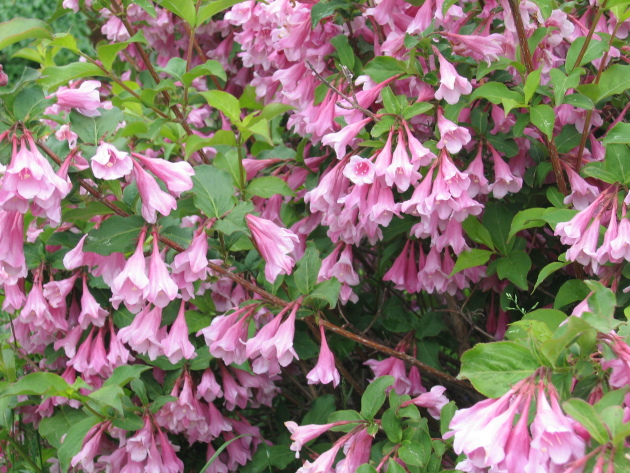
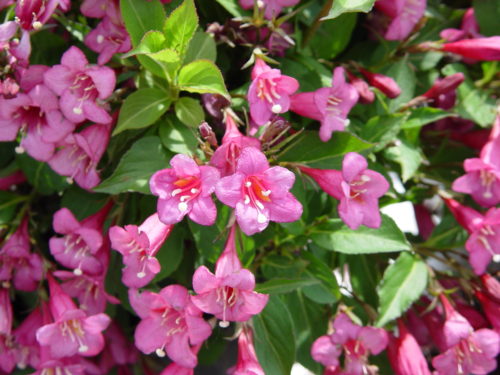
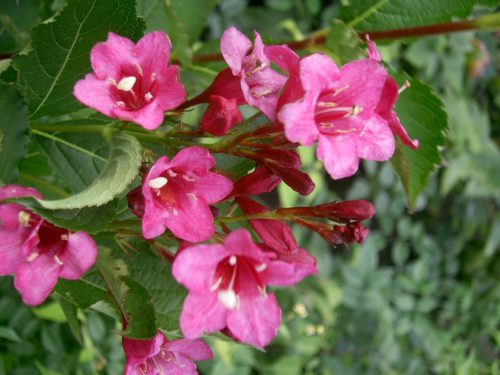
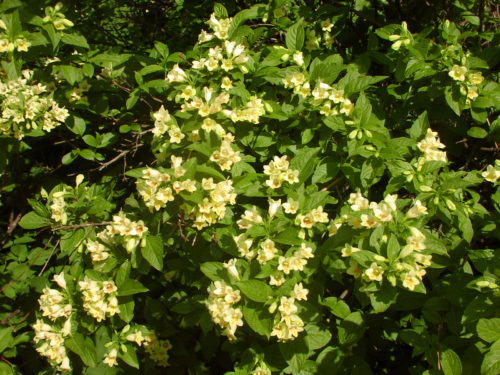
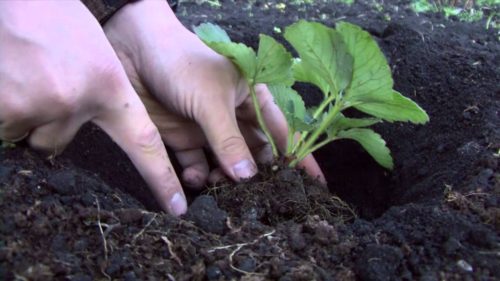
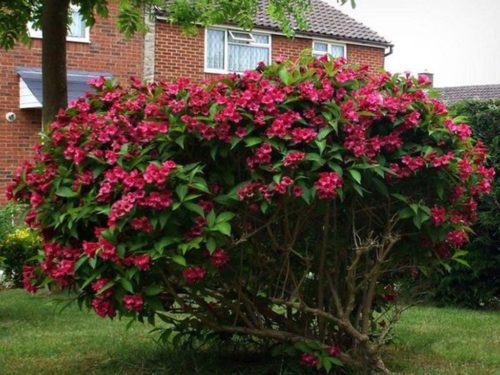
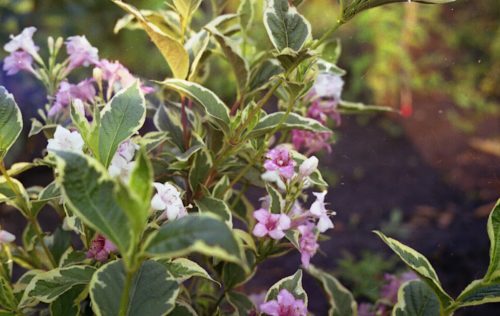
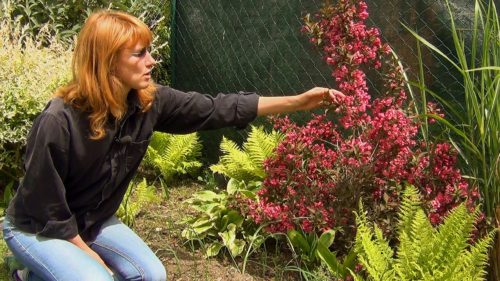

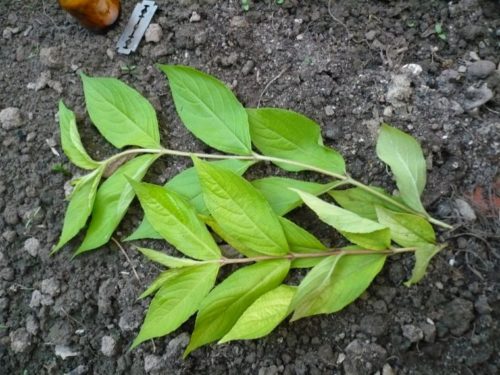
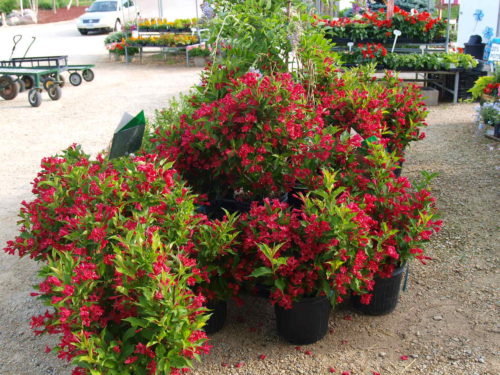
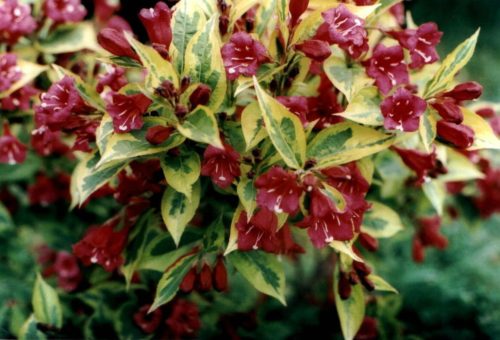
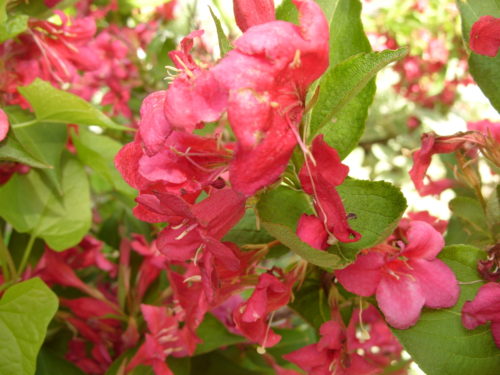
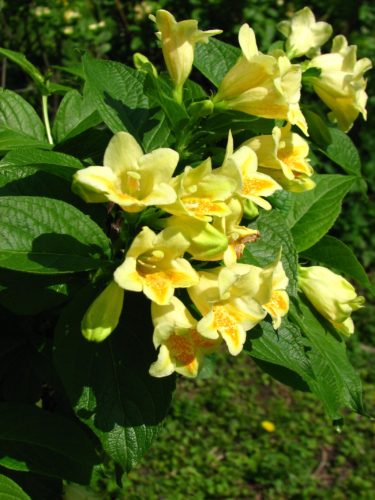
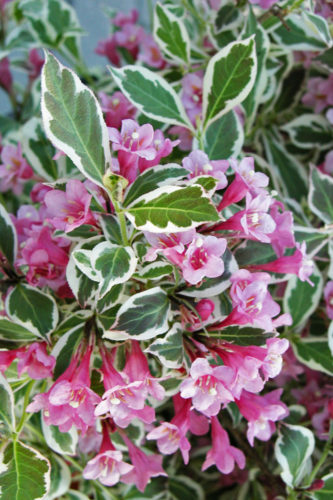
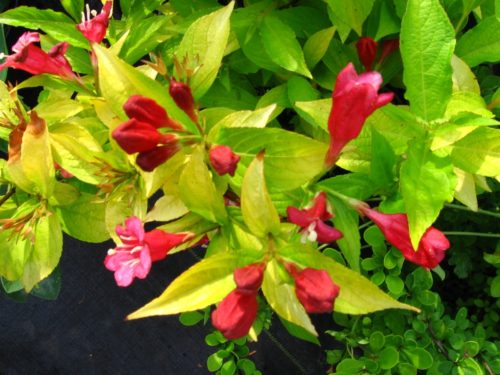












 Start a discussion ...
Start a discussion ...